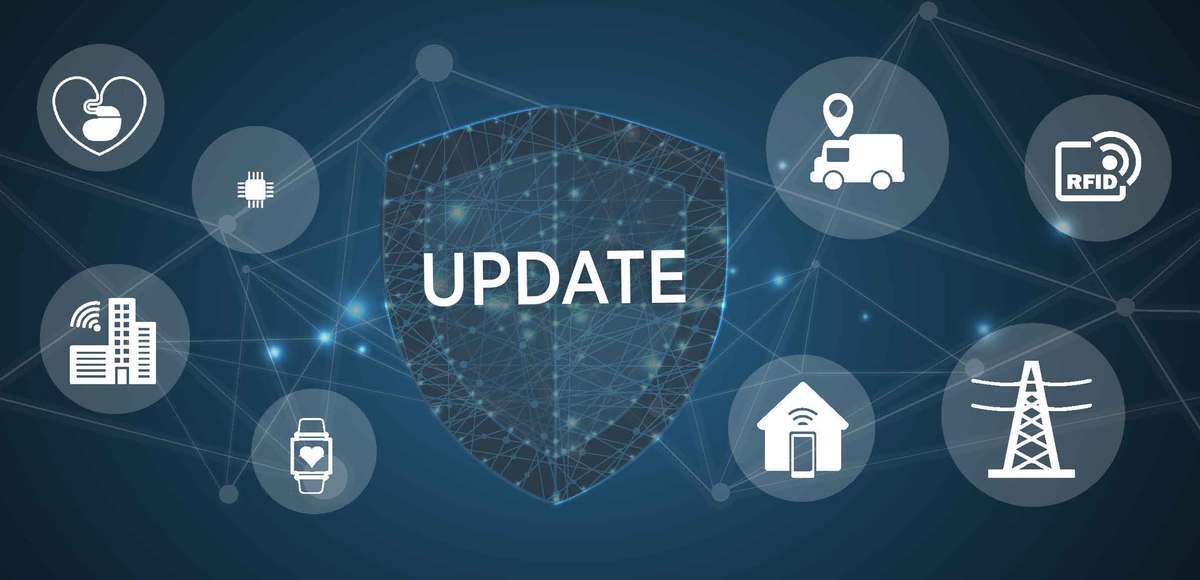The Value of Human Involvement Over Automation

Proponents of this type of automation will say that it saves time in the long
run, providing answers and solutions quickly. Automated customer support also
allows people to receive help 24/7, eliminating the issue of having to wait
until standard business hours to get an issue resolved. Automatic billing,
chatbots, and AI-assisted customer service have increasingly become the
standard, particularly for e-commerce vendors. When a business owner has an
issue — especially if it involves money, fees, or overcharges — dealing with an
endless series of automated responses can get frustrating. If those automated
responses do not lead them to the help they ultimately need, that frustration
can (and likely will) compound further. Even the most intuitive automated
solutions can’t replace a human’s personality, emotional response, and
instinctual capabilities to adapt to any situation. ... Consumers and
entrepreneurs alike are craving human connection in today’s increasingly
automated world, so much so that many brands are making the personal
relationships they foster with customers an angle of their sales strategy.
CISO Role Undergoes Evolution as Jobs Grow More Complex

“CISOs should also work closely with legal and compliance teams to ensure that
the organization is meeting its regulatory requirements,” he says.
“Additionally, a CISO should also develop strong relationships with other
security leaders in the organization, as well as with external partners such as
vendors and industry groups.” He points out other security leadership roles are
also changing and include the chief security officer, and the chief privacy
officer, with new roles emerging, including the chief data officer and the chief
digital officer. MacLeod says as the threat landscape evolves in 2023, the
complexity and sophistication of threats will require CISOs to be more proactive
in identifying and mitigating risks. ... Eisenberg adds increased scrutiny of
organizations’ spending for essential services will require the CISO to business
rationalize strategic investments in cybersecurity to counter the
ever-increasing complexity and velocity of cyber threats to business
resilience.
OpenAI makes a ChatGPT-like tool called Codex that can write software.

If an AI service can now write code for developers, it raises the question of
how it will impact students studying computer science, and if highly paid
software-engineering jobs will vanish. Still, software-engineering skills will
continue to be in high demand, and AI services like Codex are just a natural
step as programming becomes progressively easier over generations, according to
academics and experts in computer-science education. Codex has been available to
developers since 2021 in the form of GitHub Copilot. And OpenAI, which has
raised more than $10 billion from Microsoft and other backers, has been
investing more in Codex of late, hiring more than 1,000 contractors to write
code and associated descriptions that will help Codex learn to become a better
programmer, Semafor reported. Codex and ChatGPT are a "huge productivity
enhancer," and many programmers are already using Codex in their day-to-day
workflows, Christopher Manning, a professor of computer science and linguistics
at Stanford University, said.
Centralizing governance: An increasingly pertinent consideration
Historically it was common for large multinationals to have lawyers around the
world. Different jurisdictions have different laws, and it is beneficial to have
local specialists that are close to the business. Things are changing, however.
There are more opportunities, to outsource specific legal support– to
alternative legal service providers or to create an internal shared services
operation through the use of innovative legal technology, such as centralized
contract and knowledge management and cloud-based workflow tools. This makes the
centralization of certain legal activities such as entity management more
feasible and more efficient. The downside of a decentralized legal structure in
today’s world is becoming increasingly clear. From a management perspective, it
is not always easy to align business operations in a decentralized management
structure. Decentralized structures have their own authority and bring with them
tension between a local and global perspective.
8 steps to turning around a toxic IT culture

An IT leader can’t simply create a positive culture with the wave of a hand.
Culture is a function of leadership execution. “Leading by example is the way to
start a turnaround,” says Fredrik Hagstroem, CTO of Emergn, a digital business
services firm. A clear vision guides team direction. It’s like a compass that
reliably points everyone in the correct direction. Even when things are complex
or changing, having a goal helps everyone become aligned, Hagstroem says. “Good
leadership that drives collaboration and trust will be evident in frequent use
of collective and inclusive pronouns, such as ‘we,’ ‘us,’ and ‘ours’ — meaning
everyone in the company.” Strong leadership ensures that vision, strategy, and
goals aren’t just clearly understood, but attractive and motivating. “Leaders
must demonstrate that collaboration and contributions to common goals are more
important than individual performance,” Hagstroem says. He advises changing
professional relationships from urging team members to reach personal objectives
and responsibilities to achieving team goals.
Implementing an Emerging Risk Analysis Process
While looking for emerging risks, we search for information about our targeted
subjects and sweep the events that are happening. The reliability of the
information collected has strategic importance in this study. This activity is
generally called horizon sensing or horizon scanning. The effort is about
looking into the future as widely as possible while trying to see the relevant
indicators from the news, trends, cultural tendencies, political events, and
natural events. One can easily get lost in this phase or drown in a vast amount
of information from the search, since the source of information is not filtered
or tested. Unless the information is collected from an official, reliable and
reputable source, we need to take it with some healthy skepticism. Otherwise,
our results may misinform the strategy level and lead to more significant
failures. The information collection has two parts: one is to see what is
happening in the world relevant to the business, and the second is the internal
view. We look inside the organization and discuss the identified events or
changes that may contribute to define emerging risks with relevant
stakeholders.
How data governance and security is transforming shop floor operations in manufacturing
Manufacturers often incur substantial operational costs and invest in in-house
software. Also, there are expensive maintenance and other infrastructure costs
that manufacturers must keep in mind. As a result, cloud solutions seem better
options than traditional on-premises systems. The cloud computing solution can
be easily customised as per manufacturer needs with monthly or annual
subscription models, thus making a move cost-effective and time-efficient for
the manufacturers. Flexibility – With cloud technology, manufacturers can now
embrace Agile manufacturing methods that leverage flexibility, rapid iteration,
innovation, and augmentation to adapt to technological changes. With the growth
of data availability and expanded analytics capabilities, manufacturers can act
on real-time data and identify and solve problems promptly to keep up with
market demands and maintain a competitive edge. Accelerated Deployment – Shop
floor transformations are often associated with expensive and complex legacy MES
solutions.
How to Find the Right Data Governance Model and Derive Principles from Corporate Governance
It is critical to distinguish the term “governance” from “management” in the
context of data governance. It should be noted that the principal difference is
that governance refers to the decisions that must be made and who must make
them. This is to ensure effective resource allocation and management of data
operations. On the other hand, data management involves implementing the
decisions that arise from assessing and monitoring either existing controls or
the environment, including advancements in technology and the market. The
activities required for data governance can be distinguished from those needed
for data management because management is influenced by governance. Data
governance is oversight of data management activities to ensure that policy and
ownership of data are enforced in the organization. The emphasis is on
formalizing the data management function along with the associated data
ownership roles and responsibilities.
NIST Selects ‘Lightweight Cryptography’ Algorithms to Protect Small Devices

“The world is moving toward using small devices for lots of tasks ranging from
sensing to identification to machine control, and because these small devices
have limited resources, they need security that has a compact implementation,”
she said. “These algorithms should cover most devices that have these sorts of
resource constraints.” To determine the strongest and most efficient lightweight
algorithms, NIST held a development program that took several years, first
communicating with industry and other organizations to understand their needs
and then requesting potential solutions from the world’s cryptography community
in 2018. After receiving 57 submissions, McKay and mathematician Meltem Sönmez
Turan managed a multi-round public review process in which cryptographers
examined and attempted to find weaknesses in the candidates, eventually
whittling them down to 10 finalists before selecting the winner. “We considered
a number of criteria to be important,” McKay said.
Doing More With Less: How to Survive an IT Budget Cut

Each leader addresses budget cuts in their own way, since there are many
drivers, objectives, and desired outcomes that power the need to reduce
spending, says Scott Schlesinger, US data and analytics lead at management
consulting firm PA Consulting. “Regardless of the reason for the cuts, how the
organization executes the strategy, and how effectively the cuts are done, can
ultimately be a major factor in the very survival of some organizations.”
Budget cuts can also open the opportunity to reevaluate existing projects. “Are
in-flight projects delivering the intended business and technology outcomes?”
asks Tim Potter, a principal at business advisory firm Deloitte Consulting. “A
thorough assessment of all IT projects is important to validate the achievable
ROI and relative importance of each program.” He notes that a budget
reevaluation can also help IT leaders to avoid the sunk-cost fallacy -- the
tendency to continue investing in projects that aren't yielding the desired
benefits simply because a significant amount has already been invested in the
project.
Quote for the day:
"No matter what accomplishments you
make, somebody helps you." -- Althea Gibson
No comments:
Post a Comment